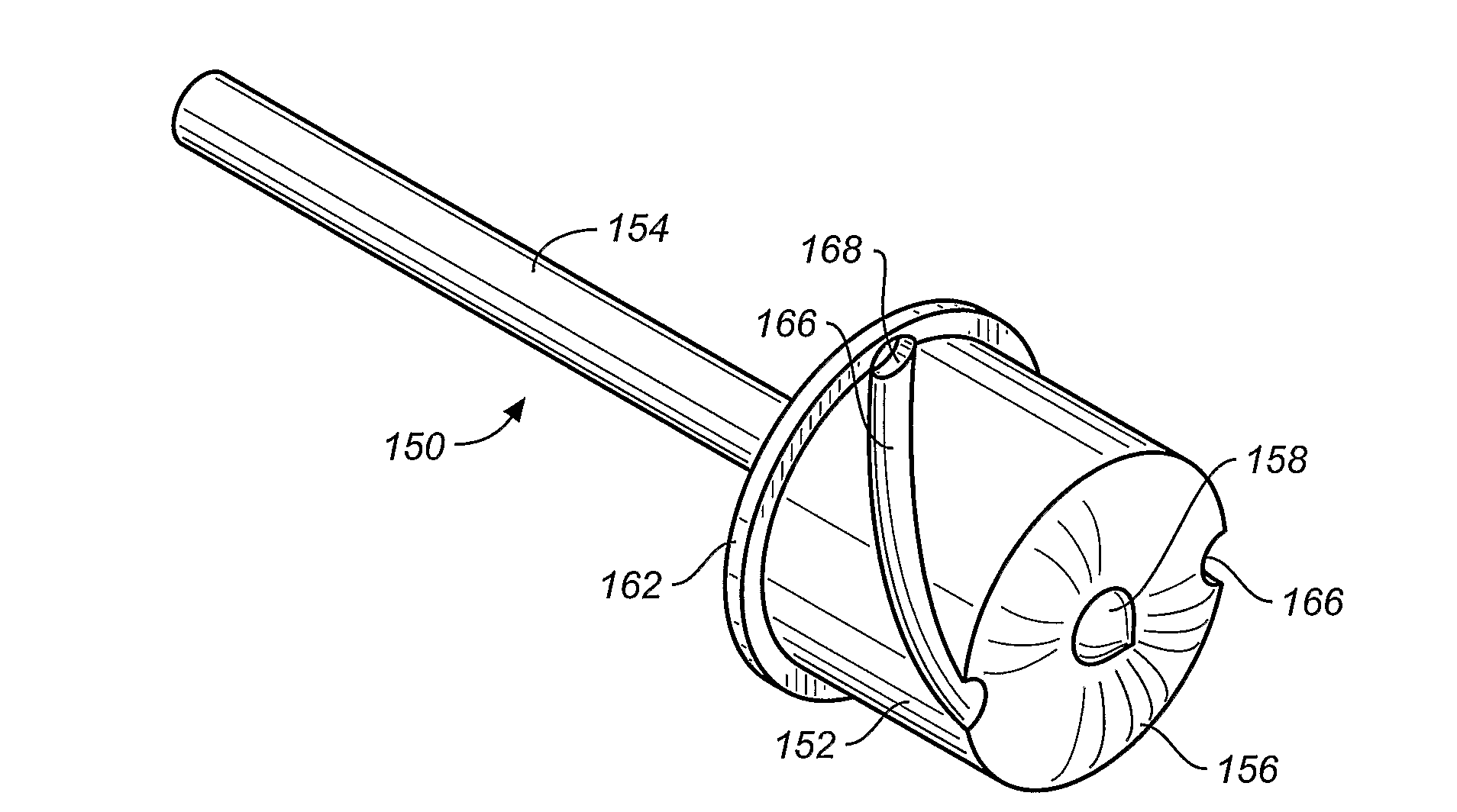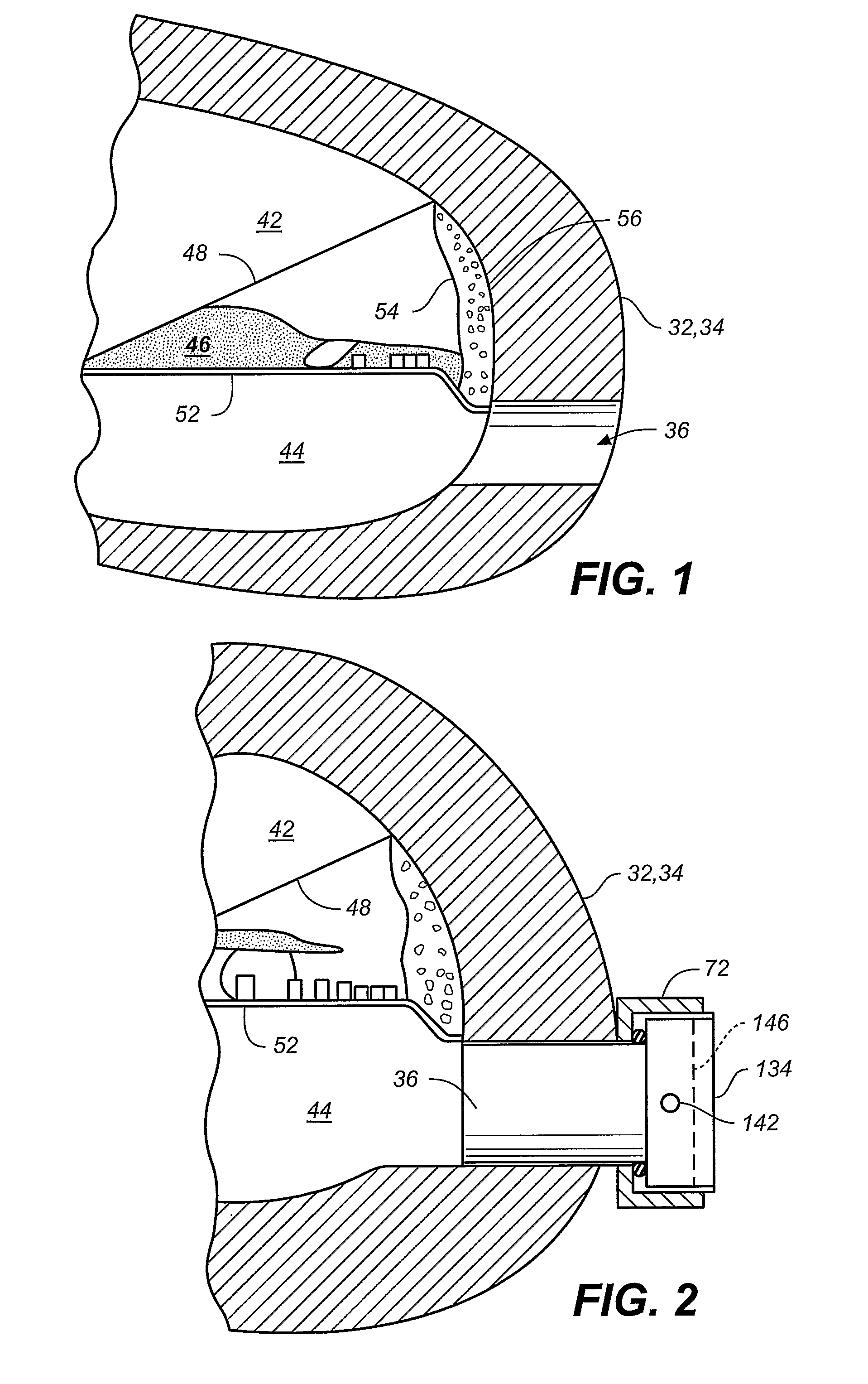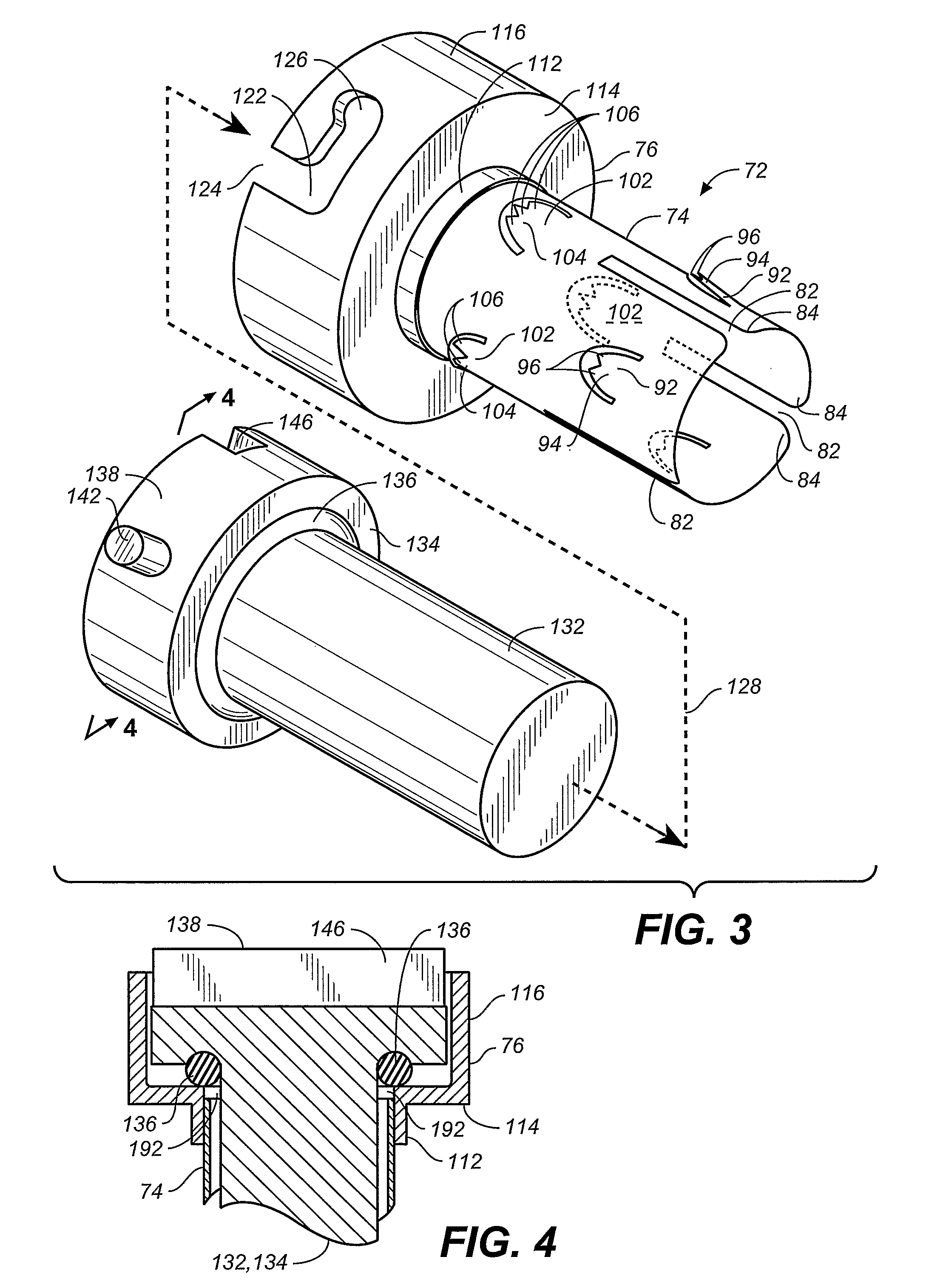Implanting a Therapeutic Appliance Into the Cochlea
a technology of cochlea and therapeutic appliance, which is applied in the field of implanting a therapeutic appliance into the cochlea, can solve the problems of biological sealing of the attachment and the ossification of the capsule bone, and achieve the effects of safe fenestration of the lateral wall, easy implanting, and no damage to the hearing
- Summary
- Abstract
- Description
- Claims
- Application Information
AI Technical Summary
Benefits of technology
Problems solved by technology
Method used
Image
Examples
Embodiment Construction
[0036]In accordance with the present disclosure, FIG. 1 depicts a promontory 32 portion of a otic capsule bone 34, i.e. cochlea, that is pierced by a fenestration 36. An upper portion of a bony labyrinth within the otic capsule bone 34 is called the scala vestibuli 42, while a lower portion of the bony labyrinth is called the scala tympani 44. A membranous labyrinth within the otic capsule bone 34, called the scala media 46, lies between the scala vestibuli 42 and scala tympani 44. A “vestibular membrane,” called Reissner's membrane 48, separates the scala media 46 from the scala vestibuli 42, while a basilar membrane 52 separates the scala media 46 from the scala tympani 44. A stria vascularis 54 and spiral ligament 56 are juxtaposed with an inner surface of the promontory 32. FIG. 1 also illustrates how precise location of the fenestration 36 may advantageously position a microactuator with great precision in the promontory 32 of the otic capsule bone 34. Configured in this way, t...
PUM
 Login to View More
Login to View More Abstract
Description
Claims
Application Information
 Login to View More
Login to View More - R&D
- Intellectual Property
- Life Sciences
- Materials
- Tech Scout
- Unparalleled Data Quality
- Higher Quality Content
- 60% Fewer Hallucinations
Browse by: Latest US Patents, China's latest patents, Technical Efficacy Thesaurus, Application Domain, Technology Topic, Popular Technical Reports.
© 2025 PatSnap. All rights reserved.Legal|Privacy policy|Modern Slavery Act Transparency Statement|Sitemap|About US| Contact US: help@patsnap.com



